Rolling Toward Hope: Lematia’s Life Transformed through Inclusion and mobility
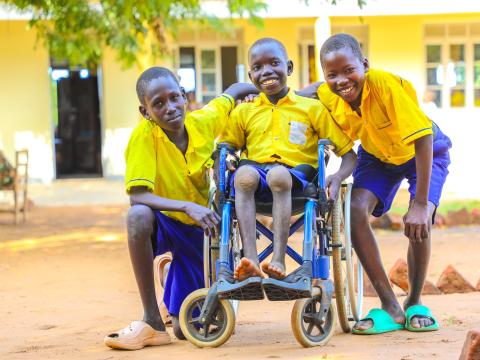
Have you ever imagined crawling 3 kilometers just to get to school?
That was the daily reality for 12-year-old Lematia. Every school day, he crawled to and from school not once or twice, but every single day of the school term.
Waking up in the morning was a nightmare. The thought of crawling such a long distance was exhausting and painful, but Lematia had no other option. Some days, the ground was dusty and stony; other days, it was muddy and wet. Yet, his determination to pursue a brighter future kept him going.
“Whenever it rained, I would arrive at school wet and dirty,” Lematia recalls emotionally. “My classmates didn’t want to sit near me. I would just attend classes on the floor.”

Lematia lives with his 62-year-old grandmother. As the only child at home, he washes dishes and cleans the compound before heading to school. Because he cannot walk or run like other children, he often arrives late, long after lessons have begun.
His Primary Two class has over 120 learners, about three times its intended capacity. More than six children squeeze onto desks meant for four, with barely enough space to place their books, let alone write.
Sitting is on a first-come, first-served basis. Learners like Lematia, who cannot compete for a desk, are forced to sit on the floor or stand at the back of the class. The room is so crowded that even the teacher struggles to move around.
Using the shared school sanitation facilities also exposed Lematia and other children with disabilities to frequent illnesses due to poor accessibility and hygiene.
His academic performance consistently ranked between 110th and 115th out of 120 learners. This discouraged him from pursuing his dream of becoming a teacher.
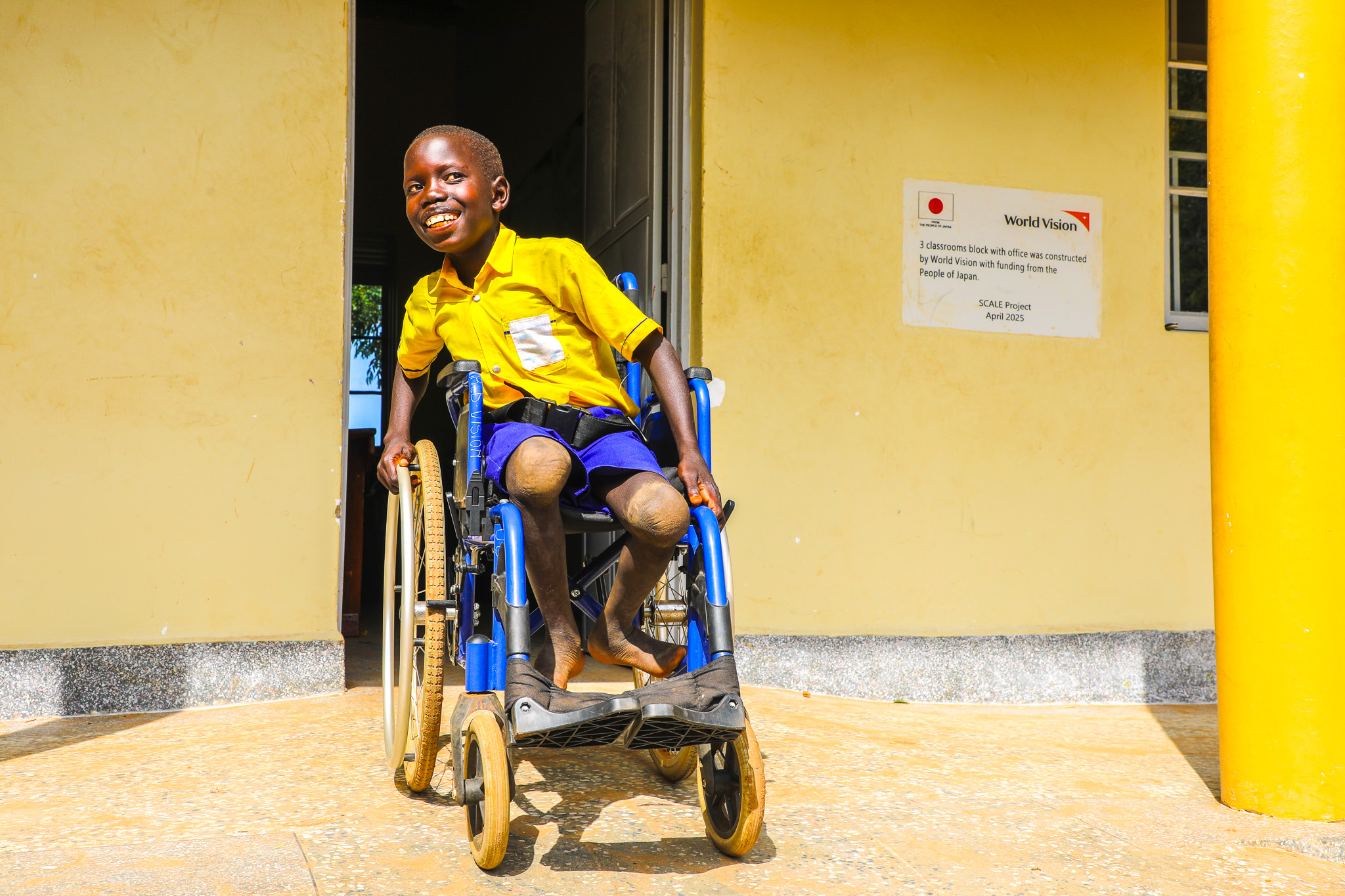
Enhancing mobility of children with disabilities
About 12% of refugees in Uganda live with some form of disability, with women, children, and the elderly being the most vulnerable. These individuals face significant barriers in accessing education, healthcare, and livelihoods.
For children like Lematia, whose caregivers cannot afford assistive devices, achieving their dreams can feel impossible.
“My prayer was always to move to school without crawling, to play with my friends, and to help my grandmother with chores,” Lematia says. “I didn’t know how it would happen, but I believed God would make a way.”
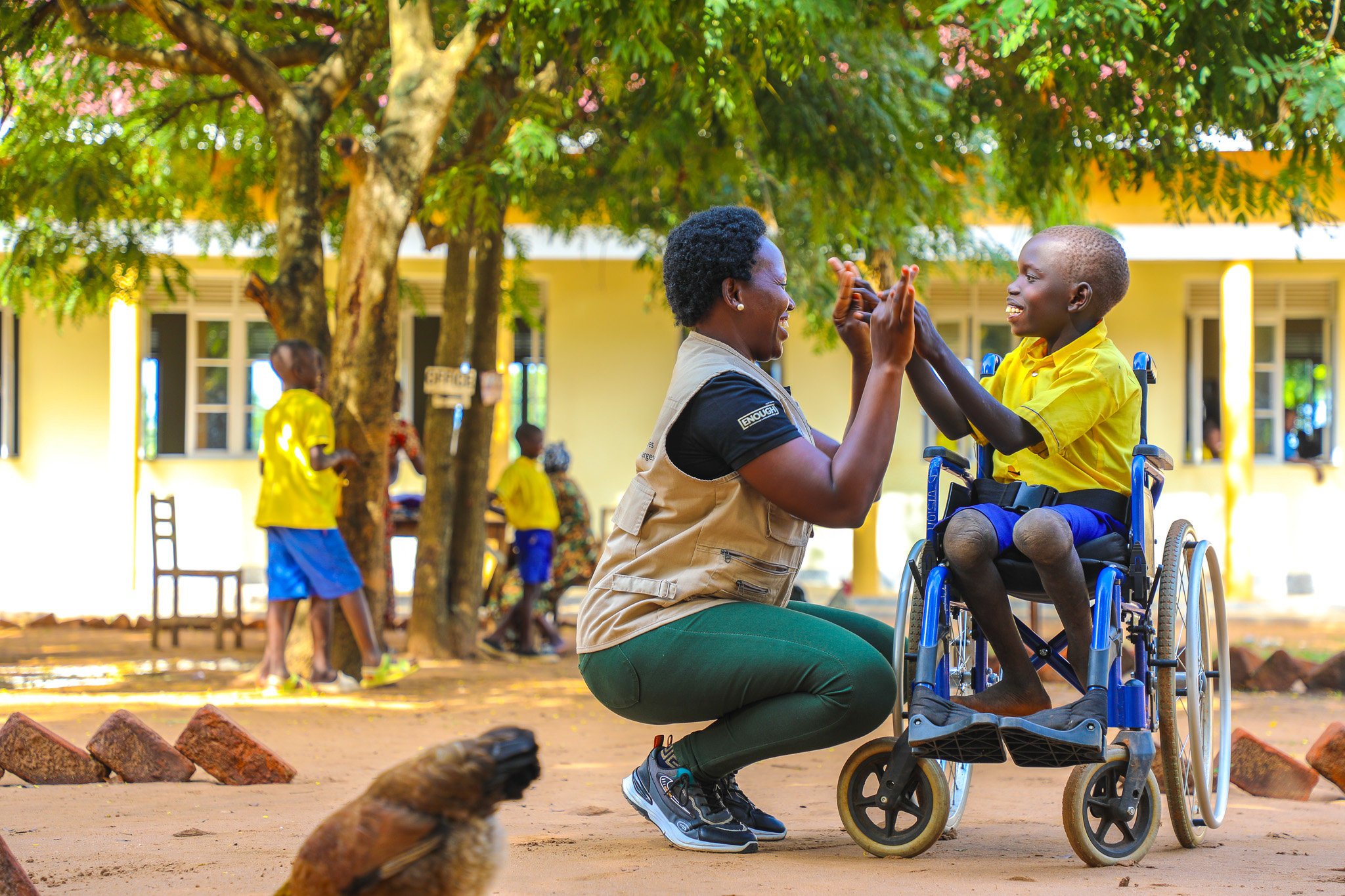
That hope turned into reality when World Vision conducted an assessment of children with disabilities in Rhino Camp Refugee Settlement and the host communities of Terego and Madi Okollo districts. This was possible through funding from the Government of Japan through the SCALE (Schools and Communities Advancing Learning in Emergencies) project. Over 180 children were assessed for various physical and sensory impairments, with the goal of providing tailored support.
Lematia was blessed to receive a wheelchair. This was an answer to his long-time prayer.
“I thank God for the gift of a wheelchair,” he says joyfully. “Now I can go to school without difficulty. I can play with my friends and feel like any other child.”
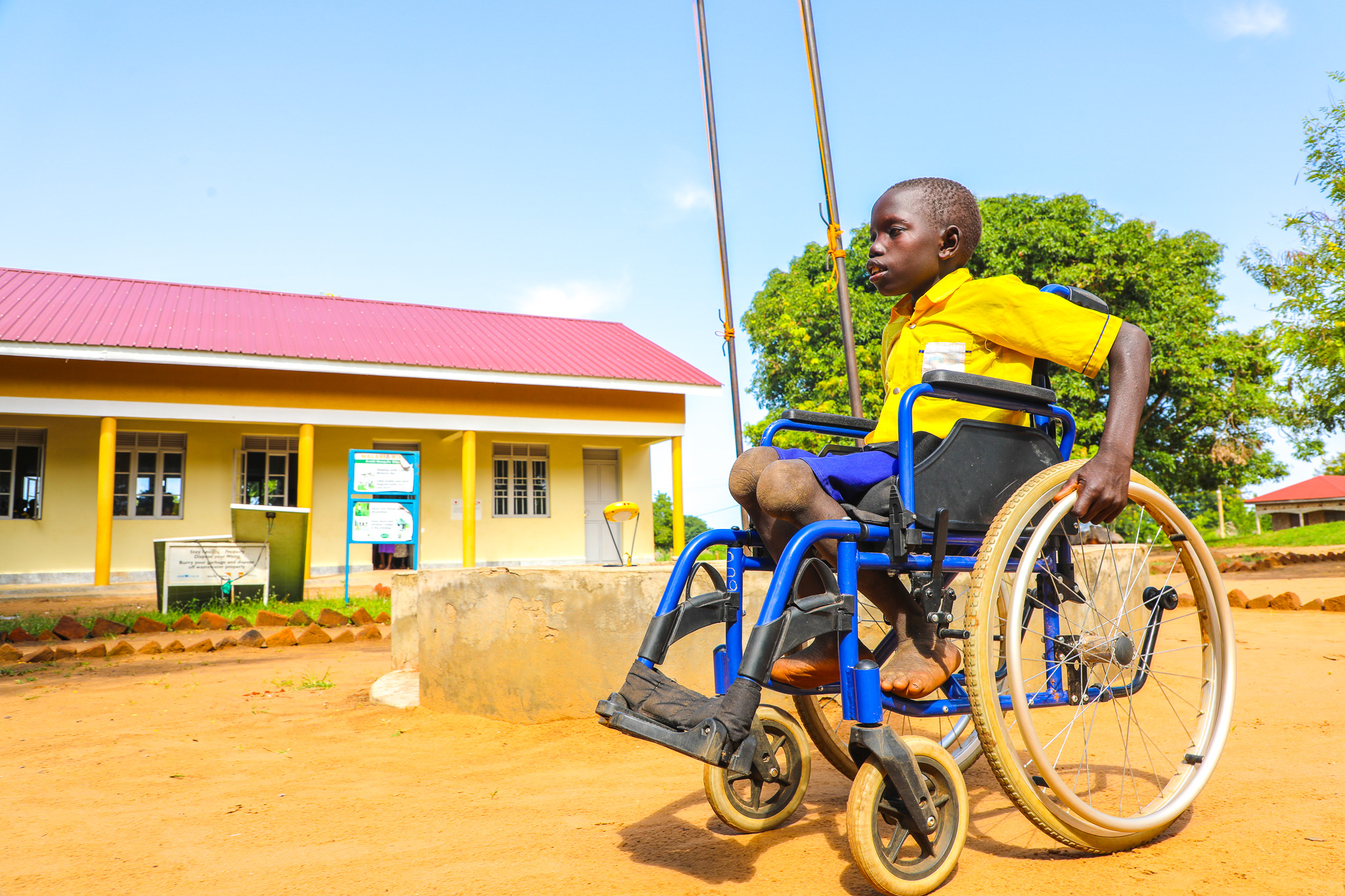
Breaking barriers with inclusive classrooms
Under the SCALE project, World Vision constructed three fully furnished classroom blocks with teacher’s offices in six schools, including Rhino Camp Primary School, where Lematia studies.
Each classroom was intentionally designed with ramps at the entrances, making them accessible for learners with physical disabilities and allowing them to participate fully in learning.
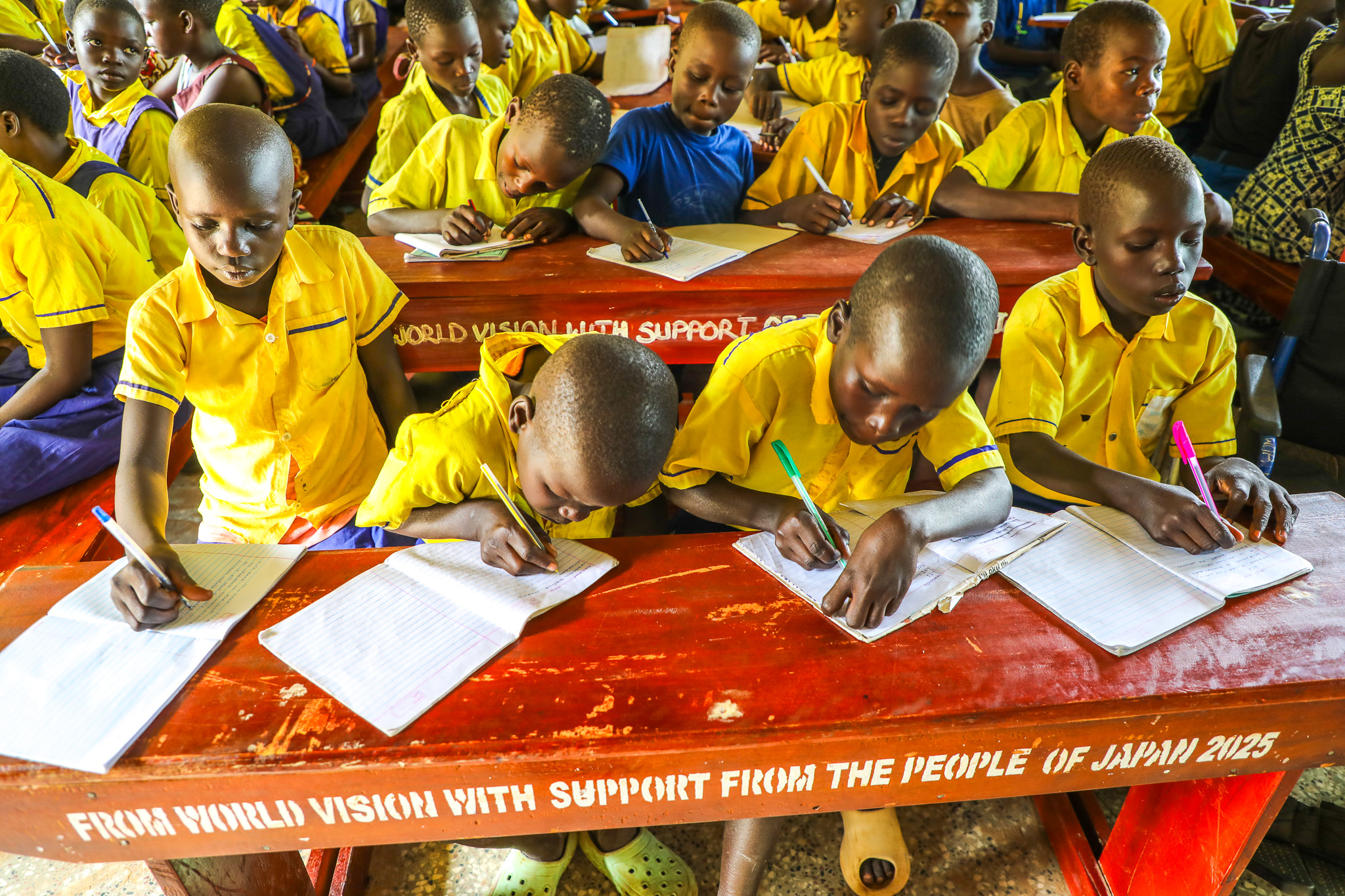
“We had 1,754 learners using just two classroom blocks,” says Isaac Vulima, Head Teacher of Rhino Camp Primary School. “One other classroom was condemned due to structural cracks. Our teacher-to-pupil ratio was 1:100, almost double the recommended 1:54. The new classrooms have made a huge difference.”
In addition to the classrooms, the schools received textbooks for libraries and children’s clubs, as well as teaching guides to support effective learning.
With inclusive infrastructure and learning materials, children with special needs now have a real opportunity to access quality education and to build the future they dream of.
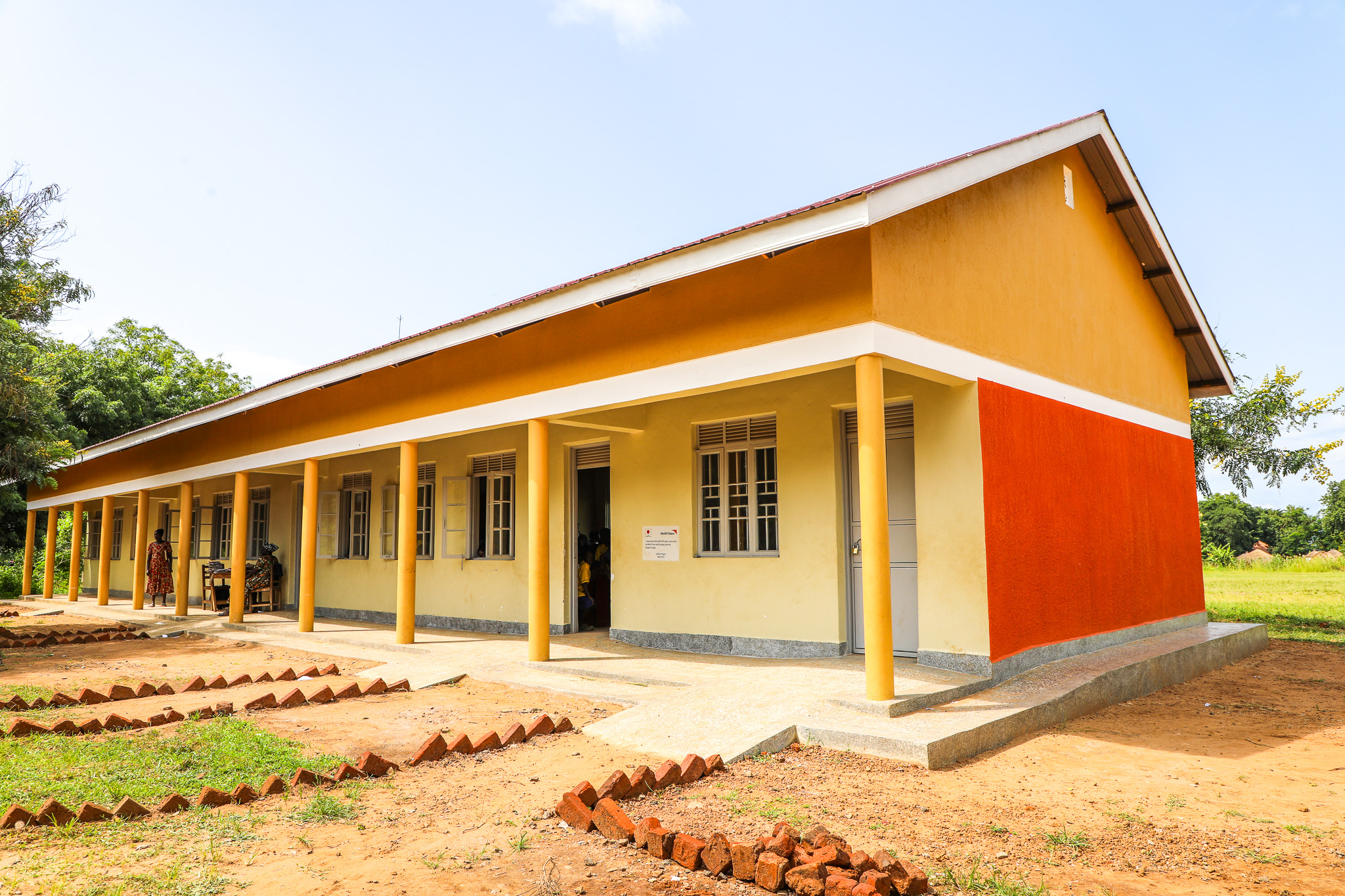
Story by: Mungu Jakisa Brian- Communications Officer